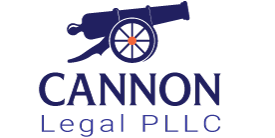Bank account frozen by a Texas receivership?
Having your bank account frozen can make a bad situation worse. Let us quickly help you resolve the judgment and underlying issue so you can get back to your life.
What is a Texas Receivership?
A Texas Receivership or a Turnover Order is a method under Texas Civil Practice and Remedies Code Section 31.002 used to collect money owed on judgments. The process of a Texas receivership is:
- A Plaintiff takes a judgment against the Defendant
- The Plaintiff appoints Texas Receiver to collect money owed on the judgment
- The judge signs the order appointing the receiver. Usually this order lasts for at least 180 days
- Using the order, the receiver goes to the bank of the judgment debtor and seizes the money in the bank accounts and safety deposit boxes. A Texas Receiver can go to any bank account anywhere in Texas to try to collect the money.
- The receiver collects the money due to the Judgment Creditor and notices the court how much was collected.
- The judge will order the disbursement of the money
Turnover orders / Receiverships have now become the preferred method of debt collection of some of the largest debt buyers and debt collection law firms in Texas.
Creditors using Texas Receiverships
- Portfolio Recovery Associates LLC
- Midland Credit Management Inc
- LVNV Funding LLC
- Credit Corp Solutions, Inc
- Cavalry Portfolio Services
- Cavalry SPV I
Debt collection law firms using Texas Receiverships
- Rausch Sturm
- Scott & Associates
- Michael J, Adams PC
- Johnson & Mark LLC
- Moss Law Firm
Who are the court receivers in Texas?
While there are many court appointed receivers in Texas, most consumers with credit card debt will deal with one of these court appointed receivers.
Jenkins Court Receivers
2221 Justin Rd, #119-480
Flower Mound, TX 75028
Phone and Fax | 214-220-2022
courtreceivers.com
How to defend yourself against a receivership or turnover order?
You can file with court the TRCP 679b Exemption Notice that is required to be sent to you from the receiver. By filing this notice you may be able to get a portion or all of your money taken from your bank account back.
The following is a list of the types of money and property that may be protected:
- Current wages for personal services
- Social Security Administration benefits, including Social Security Retirement, SSI, SSDI
- Veterans Administration benefits
- Railroad Retirement Board benefits
- Office of Personnel Management retirement benefits
- FEMA disaster benefits
- Workers’ compensation benefits
- Unemployment benefits
- Child support, alimony, and spousal support
- Pension and retirement benefits
- Proceeds from the sale of a homestead within 6 months after the sale
- Tax-deferred retirement accounts, like 401(k) and IRA accounts
- Professionally prescribed health aids, like hearing aids and CPAP machines
- Education savings accounts
- Health savings accounts
- Temporary Assistance for Needy Families (“TANF”) funds
- Life insurance policy or annuity benefits
- Bible or other sacred religious book in the safety deposit box
In addition, the following types of property may be protected up to a combined value of $50,000 for a single person or $100,000 for a family:
- Home furnishings, including family heirlooms
- Food and similar items for consumption
- Farming or ranching vehicles and implements
- Tools, equipment, items, or vehicles used for a job
- Clothes
- Jewelry up to $12,000 for a single person or $25,000 for a family
- 2 firearms
- Athletic and sporting equipment
- 1 motor vehicle for each member of the family
- 2 horses, mules, or donkeys with food on hand and riding equipment
- 12 head of cattle with food on hand
- 60 head of other livestock with food on hand
- 120 fowl with food on hand
- Household pets
- Unpaid commissions for personal services up to $12,500 for a single person or $25,000 for a family

